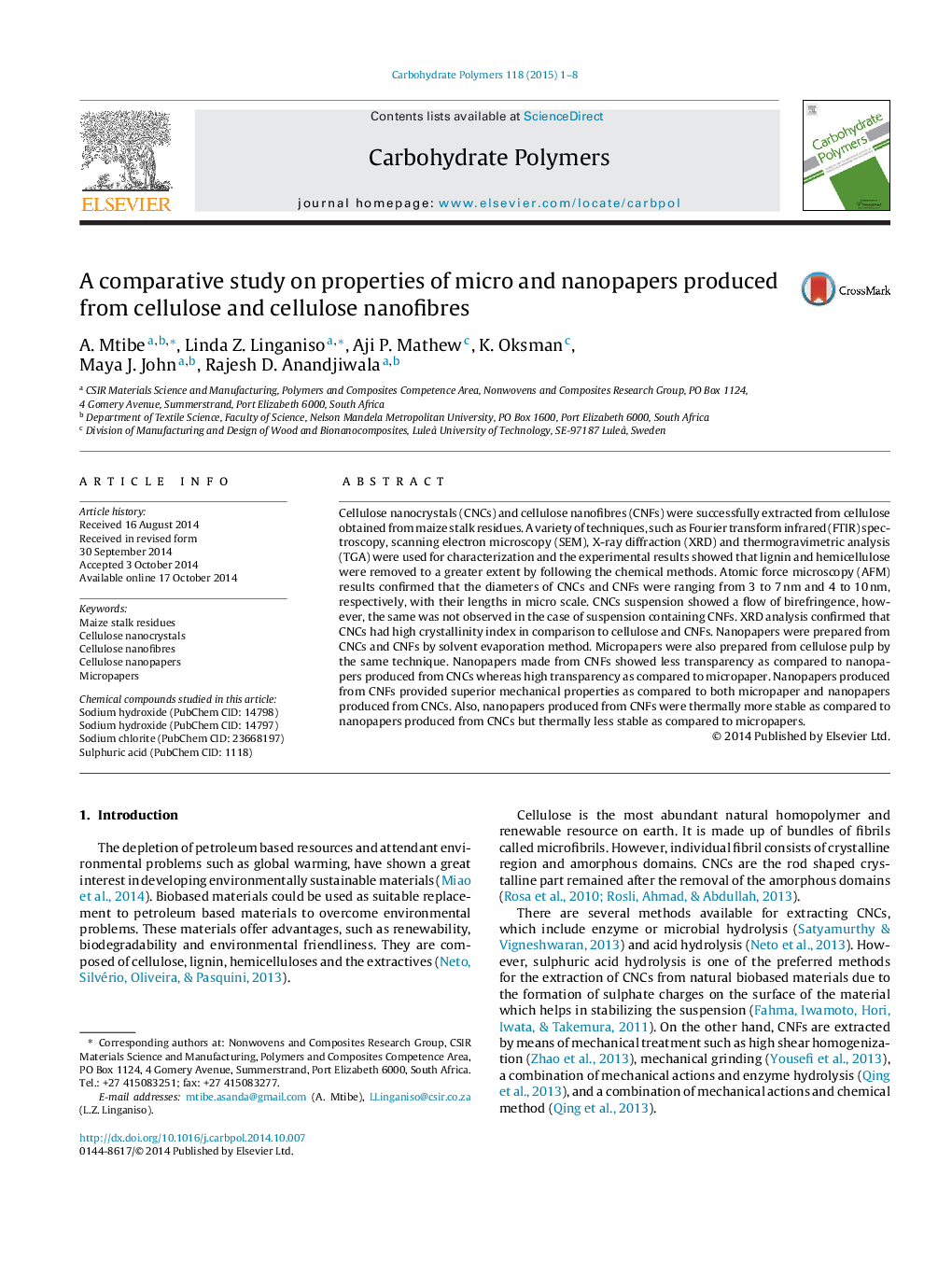| Article ID | Journal | Published Year | Pages | File Type |
|---|---|---|---|---|
| 1383828 | Carbohydrate Polymers | 2015 | 8 Pages |
•This study the extraction of cellulose from maize stalk residues and to characterize it by FTIR, ESEM, TGA and XRD techniques.•Another objective of this study was to produce high quality CNFs and CNCs from cellulose obtained maize stalk residues using supermass colloider and acid hydrolysis.•The morphological features of the CNFs and CNCs will be determined by AFM.•The obtained CNFs and CNCs were used to develop nanopapers and their mechanical, thermal properties and optical transparency were investigated.
Cellulose nanocrystals (CNCs) and cellulose nanofibres (CNFs) were successfully extracted from cellulose obtained from maize stalk residues. A variety of techniques, such as Fourier transform infrared (FTIR) spectroscopy, scanning electron microscopy (SEM), X-ray diffraction (XRD) and thermogravimetric analysis (TGA) were used for characterization and the experimental results showed that lignin and hemicellulose were removed to a greater extent by following the chemical methods. Atomic force microscopy (AFM) results confirmed that the diameters of CNCs and CNFs were ranging from 3 to 7 nm and 4 to 10 nm, respectively, with their lengths in micro scale. CNCs suspension showed a flow of birefringence, however, the same was not observed in the case of suspension containing CNFs. XRD analysis confirmed that CNCs had high crystallinity index in comparison to cellulose and CNFs. Nanopapers were prepared from CNCs and CNFs by solvent evaporation method. Micropapers were also prepared from cellulose pulp by the same technique. Nanopapers made from CNFs showed less transparency as compared to nanopapers produced from CNCs whereas high transparency as compared to micropaper. Nanopapers produced from CNFs provided superior mechanical properties as compared to both micropaper and nanopapers produced from CNCs. Also, nanopapers produced from CNFs were thermally more stable as compared to nanopapers produced from CNCs but thermally less stable as compared to micropapers.
